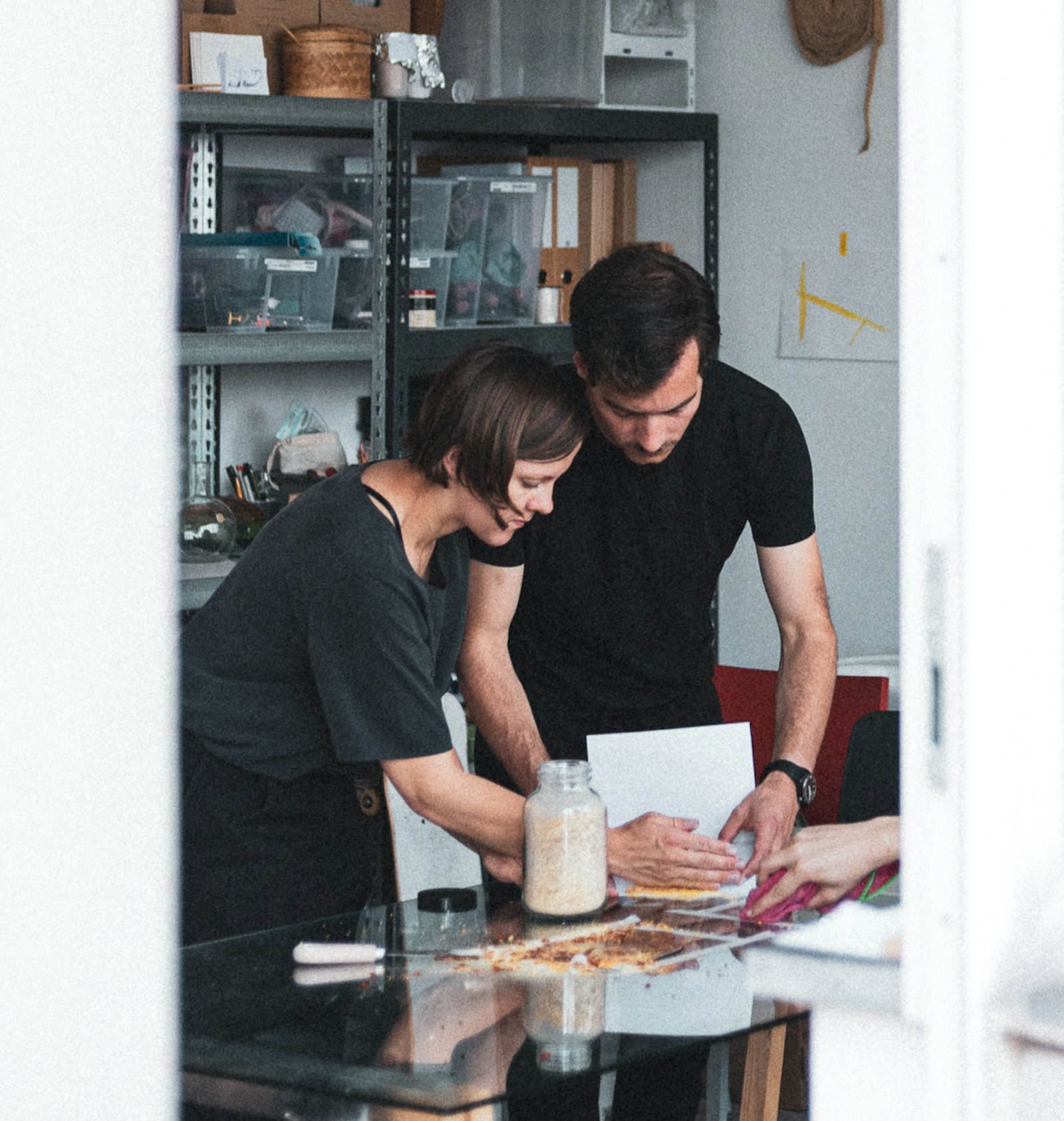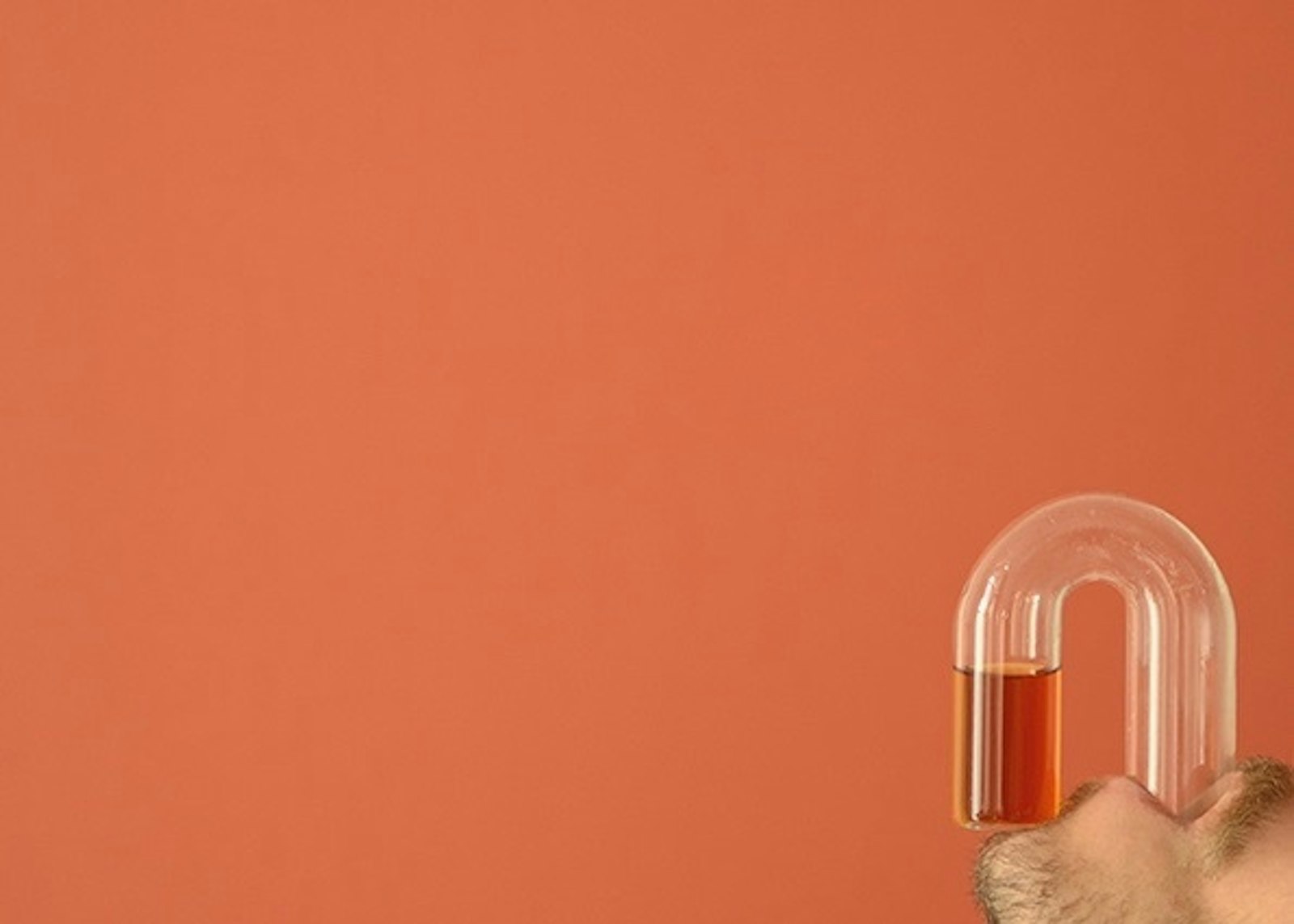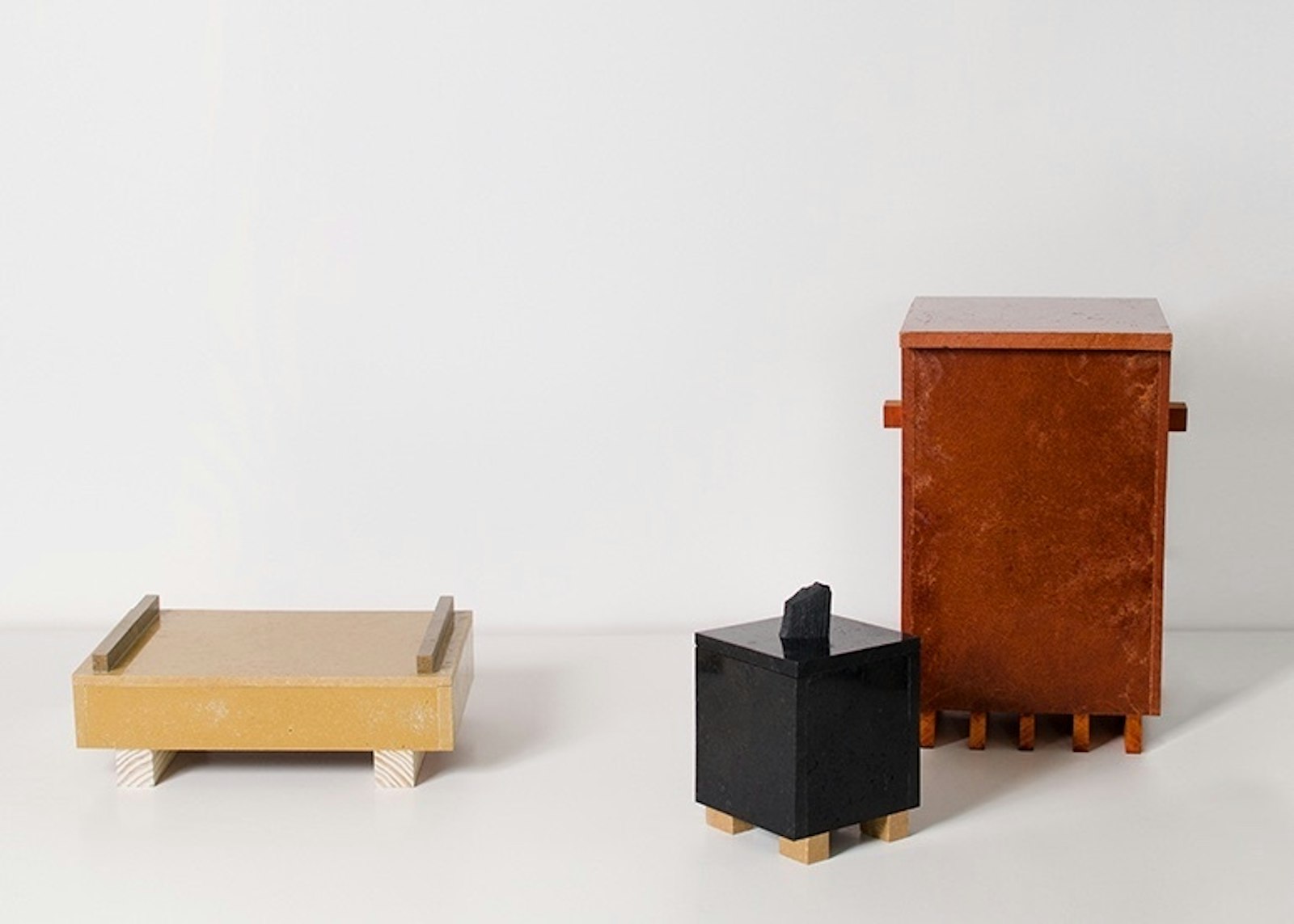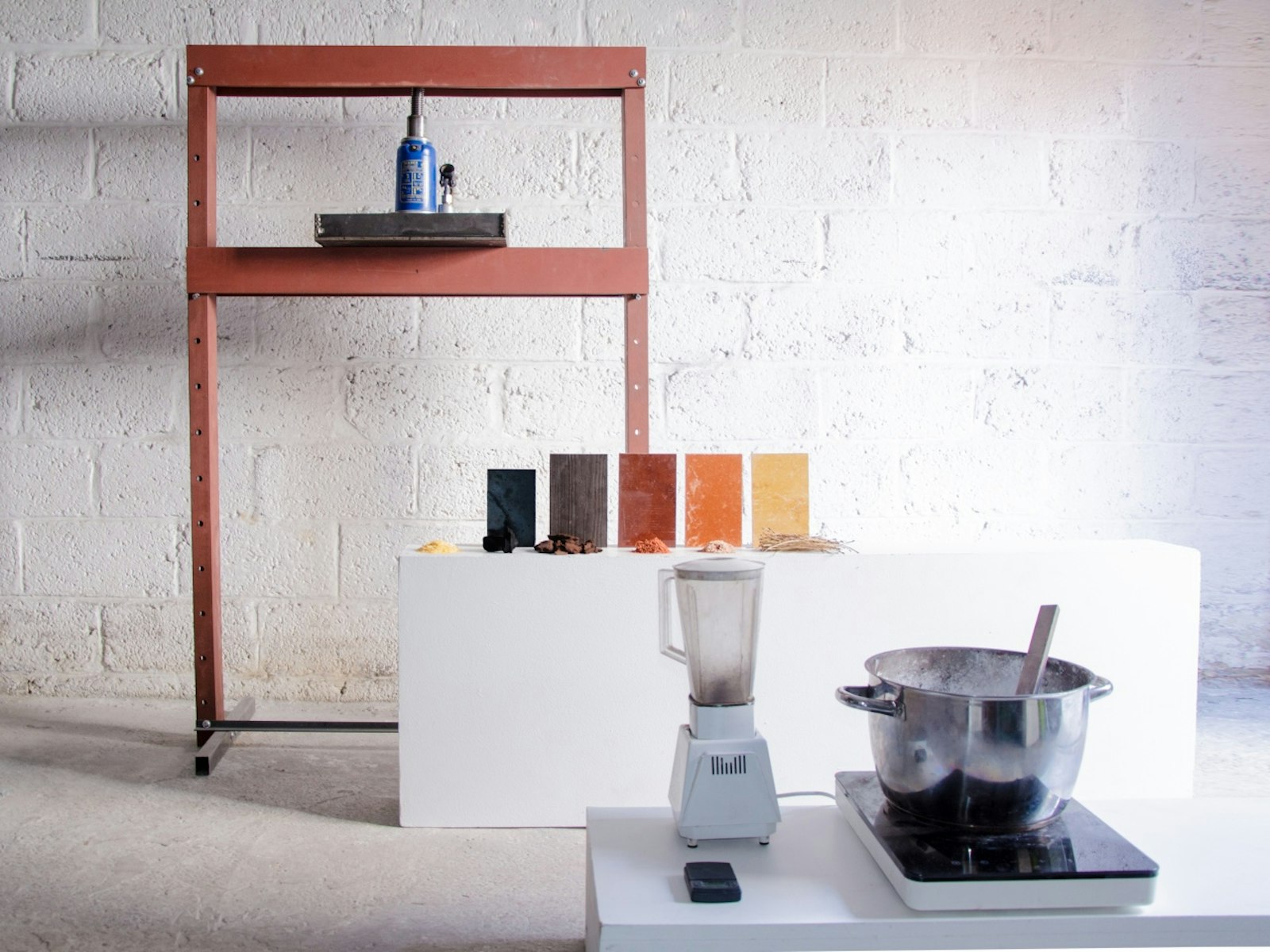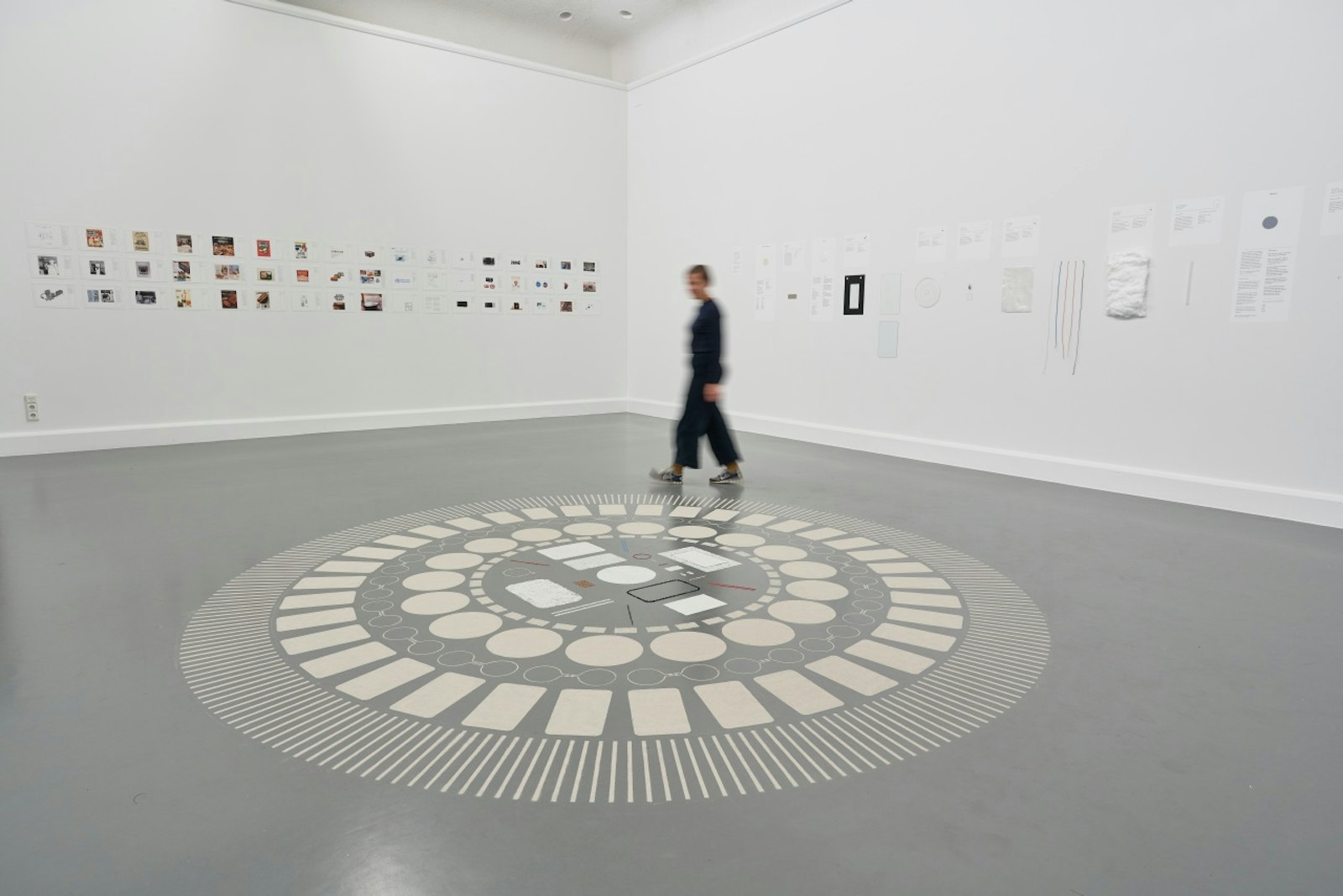de Velde
Studio Plastique
In doing so they clearly prefer solutions to problems that are overlooked by others: in Comrades they designed drinking cups that have to limit excessive drinking among young people, by turning drinking into a precious but cumbersome ritual, whereas in Man’s Best Friend accessories for multifunctional dogs are set out to improve the quality of care for the elderly. In passing the designers also want to keep rethinking the whole education system, and to highlight design’s Dark Matter, whereas projects such as Common Sands and Out of the Woods updated forgotten resources and waste into ecologically responsable alternatives for the industry in these harsh climatic times: “The future wil not lie in tapping into even more new raw materials, but in the repurposing of old ones that are still abundantly available, but have escaped our attention.” The ambition and vision of Theresa and Archibald are as grand and compelling as the 360 ° panoramic view they enjoy from their small workshop fourteen floors high in Brussels. A portrait.
Provocation
From Theresa and Archibald’s first joint project, Comrades, which offered alternatives for cheap paper drinking cups that got more and more unmanageable with growing consumption, and thus tried to incite heavy drinkers to moderate their habit, the plastic and sculptural element has also played a decisive role, as a tool that had to raise simple products to the status of precious objects, totems, mene tekels or storytellers – a characteristic that also explains the name of their studio: “In everything we do a question that pops up from the very beginning is if this new project should also come with new products, and if so, under what conditions, “ says Archibald, “And anyway, we primarily focus on processes, which we try to rethink from a to z, together with all the partners involved. If this has to lead to new objects along the way, these should crystallize and radiate these processes.” The fact that many are being wrong footed by the fact that they first and foremost associate the name plastique with the homonymous material, is an added bonus: “Right now, we are even investigating the possibility of materials that will automatically dissolve after five years, the life expectancy of many products, without leaving any traces that are harmful to the enivironment, as 21st century alternatives for plastic, which as the material par excellence of the past century, was created to last an eternity. So we are all but plastic,” Theresa and Archibald laugh. Provocation is part of their strategy.
Alzheimer
Time after time the duo also questions the general state of Alzheimer or amnesia in the design world, which allowed design to make the same mistakes again and again over the past two centuries, and to develop from bad to worse. In Out of the Woods for instance, Archibald and Theresa, who was born in Welbsleben, a small German village between Leipzig and Hannover, returned to her roots, and the time when Germany was one giant forest, in their efforts to revive the once flourishing but totally forgotten technique and industry of Pine-tapping. The first results were shown at the latest Milan Design Week, as an ecologically sound alternative for the ruling forms of forest conversion, which are almost without exception based on tree feelling, and their disastrous consequences.
Resin Tapping
Resin tapping is a technique in which the bark of a pine tree is removed from one third of its circumference, after which the resin that the tree produces in that part can be harvested by means of incisions in its outer layers. Before chemicals that were based on oil extraction made it redundant, it was a widespread industry all over Europe, since the pine resin could be used for plenty of applications after distillation, from pharmaceutics to cosmetics, in tar, but also in early plastics and paint. Resin can be harvested almost the whole year round, without it being a threat to the tree. Nevertheless, today only a few small production centres are still in existence, harvesting the resin with traditional and artisanal techniques.
Invisible
The duo was not merely driven by nostalgia when it invited some of these artisans to join them in their search for new opportunities which resin tapping might have to offer. On the contrary: “We are forward-looking, but are at the same time convinced that the future does not lie in tapping into even more new materials, but in the search for and reallocation of existing ones, which are still abundantly available.” Out of the Woods investigates the way in which Rosin can be used as a binder for other natural materials, such as leaves, needles and bark, but also industrial waste, such as zoals wood dust or rejected timber.
Holistic
The first result of the project was a series of boxes that were first shown in Milan and later at the Design museum in Ghent, as part of the Generous Nature exhibition, an Belgium is Design initiative. “We moved to a next level since then, “ Theresa says, “ and went on the search for new and more complex applications, such as using injection moulding.” “But far beyond these objects, what interests us first and foremost is to find an alternative form of forest conversion, “ Archibald adds, “Of course, it is out of the question that this new technique could replace the logging industry as a whole. The dilemma is not unlike the one that opposes combustion engines to electricity in cars: the final solution is a combination of both. Similarly, our production technique could be part of a more diversified, balanced, ecological and holistic approach of the ecosystem, doing away with the excesses of a one-sided focus on forest clearing. But such an approach can only be installed after consultation. That’s why we always hope to discuss things from the very beginning with all the parties involved.”
Common Sands
As the name already implies, Common Sands was a similar research, which focused on another ubiquitous but neglected resource: sand. Notably the sand which is incorporated as silicate in household appliances, stood -and still stands- central to the project. “Throughout the centuries, but especially since the second world war, we have accumulated 50 billion tons of waste, that could serve as resources to future generation, “ Archibald says, “We opted for the recuperation of waste from kitchen appliances, because everyone had at least some kind of experience with them, and more specifically for silicate because the industry is not interested in trying to recuperate this waste material, so that it remains kind of invisible. Silicate is not only hard to recuperate, but recycling it also complicates the recuperation of metals from the same appliances.” Common Sands comprises a series of glass objects - trays, dishes, a carafe and glasses – that were created using the silicate in alppliances, in colors and shapes that fully exploit the ‘flaws’ that keep the industry from recycling the material. To emphasize their origin the size of each object is defined by the size of the appliance it is recuperated from, while a description of the appliance is also engraved in the object, such as Fridge Bauknecht KDA2473WS Made in EU, discarded 12/17, transformed 03/18 in Belgium.
Dark Matter
This urge to reveal the Dark Matter or dark side of design, all these properties and connections that mostly remain invisible to the naked eye, was recently pushed a bit further in the installation which Studio Plastique built at the Van Abbemuseum in Eindhoven during the latest Dutch Design Week, as part of the Geo Design-Junk exhibition. The installation looked at one of the home appliances that houses silicate, the Microwave - from all possible perspectives. At its centre was a sand drawing which took the shape of a mandala, while the different parts of the microwave were highlighted as if they were jewels – hardly a surprise when one considers the past and sculptural ambition of the duo.
Priorities
“We also continue our search for new applications in Common Sands, “ Theresa says, “such as glass panels”. And the fact that up till now none of the studio’s projects actually went into production, is only a matter of priorities and choices, says Archibald, who already got so hooked on his graduation project Man’s Best Friend, that he had already considered to set up his own production line as a student. “But then you realise that this will take at least ten years of your life, and that you won’t be able to develop any other ideas in that period.“ “Much as we would love to help in building a process from beginning to end,” Theresa concludes, “we are convinced that we can be much more useful as catalysers, agent-provocateurs that trigger processes, instigators.”
